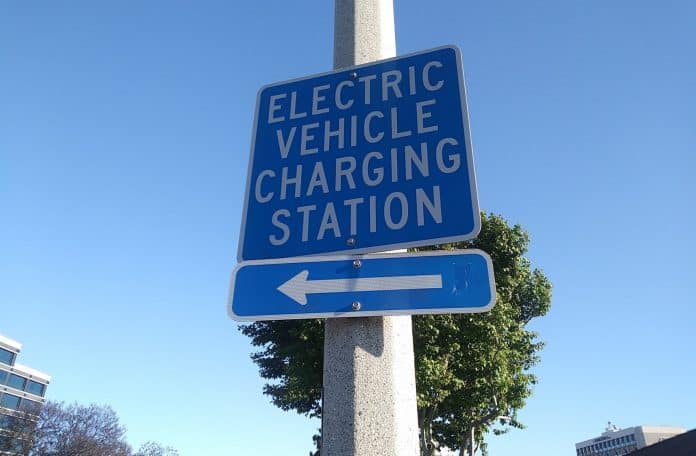Do you think the school bus industry has a steep mountain to climb toward full scale EV adoption? Consider the monumental task ahead of the trucking industry
Global consultant Roland Berger released a report last month that forecasts what a realistic electricity infrastructure buildout needs to look like for all Class 3-8 battery electric vehicles. While noting that $496 billion is needed for on-site charging infrastructure nationwide, with an additional 20 percent—$126 billion—needed for on-route charging, the study claims heavy-duty truck fleets need 2.5 times more funding than medium-duty fleets do to meet charging needs ($145,000 per vehicle compared to $54,000 per vehicle).
Charging infrastructure alone accounts for over 77 percent of U.S. freight industry annual revenue of $800 billion, said Dr. Wilfried Aulbur, senior partner at Roland Berger. At the same time, utilities will need to invest $370 billion for electric grid upgrades. In all, the forecast pegs the cost of electrifying all U.S. commercial trucks at over $1 trillion. That figure doesn’t include purchasing EV trucks that cost upwards of $400,000, or two- to three-times that of a new diesel truck, a similar cost comparison of electric and internal combustion school buses.
During a video call hosted by the Clean Freight Coalition (CFC), which sponsored the study, members agreed that medium-duty truck segments such as school buses are primed to carry the initial weight of electrification. The forecast found that these low-mileage vehicles “will not need on-route charging, and can use Level 2 chargers on site, minimizing charger and makeready investments …” Theoretically, at least. It rightly notes that daily driving distance of these school buses as well as utility service and last-mile delivery vans cannot exceed usable range of the batteries, and it added that school districts with higher mileage requirements for its school buses really do need on route charging at public locations.
School buses are also in a better position to charge overnight than truck fleets, the time when the latter perform much of their operations. At the same time, utilities are imploring trucks to charge at night, similar to school buses, to reduce demand on the grid. One CFC member noted overnight charging would flip the trucking industry’s business model on its ear and greatly increase daytime traffic congestion nationwide and negatively impact battery range.
The forecast notes that larger medium-duty fleets need more extensive service upgrades. But smaller school districts that are running school buses essentially all day, accounting for an increasing amount of midday service, also need DC fast chargers and the required infrastructure to support them.
Still, as the forecast shares, there are several national truck fleets using electric fleets, at least in certain areas. Think PepsiCo/Frito-Lay. While total cost of ownership parity is available in some places, a national rollout amid regulators requiring full-scale adoption in states like California within a decade, will be a colossal if not improbable feat, coalition members commented. That is why the conversation needs to include the role played by other fuels such as propane and, yes, diesel. As Chris Spear, CEO of the American Trucking Association said during the call, tailpipe emissions have already been cut by 98.5 percent over the past four decades.
Meanwhile, these same challenges, or opportunities depending on your perspective, will come into clearer view the more electric school buses drive down the road. Already, this industry is hearing from the first recipients of the U.S. Environmental Protection Agency Clean School Bus Program rebates in 2022. Starting on page 44, we hear from several school districts that received their electric school buses and now have them successfully on routes. Meanwhile, many other ESBs are sidelined, either due to warranty repairs or because charging infrastructure has yet to be completed.
More case studies will emerge as school districts and bus companies receive and deploy their school buses won in last year’s competitive grant, followed by the winners of the current rebate. Wash and repeat through 2026, when the program is exhausted. But then what?
The incentives under the federal Infrastructure Investment and Jobs Act as well as Inflation Reduction Act are important to commercial electrification, more money is needed. One CFC member said regulators are wrongly assuming the electrification rollout can follow that of, say, smartphones. But he noted the vast differences in technology and complexity. Electric truck and school bus customers can’t simply order an EV and bring it home that day to put into operation. A more realistic timeline is necessary.
That is exactly what student transporters from New York to California with stops all along the way have been saying. The roles of trucks and school buses have reversed. Large national and small local and regional trucking operators are now looking to the student transportation industry to take the lead in the climb toward clean air.
Editor’s Note: As reprinted in the April 2024 issue of School Transportation News.
Related: Electric School Bus Webinars Scheduled for this Summer
Related: Industry Advocates Talk Best Practices of Implementing Electric School Buses Across States
Related: Do Charging Infrastructure Challenges for Trucking Industry Correlate to School Buses?
Related: Updated: OEMs, Organizations Comment on EPA GHG Phase 3
















